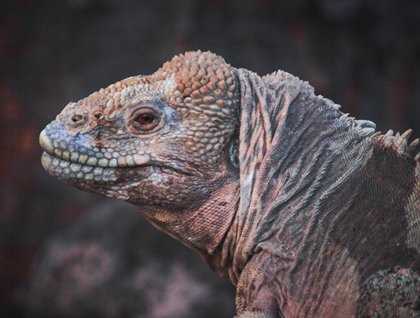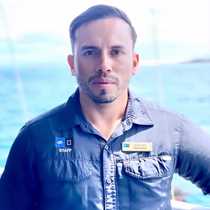We had a dry landing on a colorful uplifted island known as South Plaza (named after an Ecuadorian President). This small island has a flat, barren and arid ecosystem. The area was completely covered with yellow land iguanas and red succulent Galapagos carpet weed. These land iguanas successfully colonized the archipelago around 11 million years ago, since they separated from their ancestors. Today, they are found on six different islands, including South Plaza where they became the top herbivore. This island was uplifted from the bottom of the ocean floor millions of years ago, and today serves as the habitat for yellow dragons, finches, cacti, colonies of sea lions and a large variety of vegetation which allows the biological process of secondary succession to take place. The cliffs on these islands are bathed by the breaking waves and they serve as a nesting ground for the Galapagos shear waters and Swallow tailed gulls, which are seen overhead flying in search of food.
After lunch, we dropped anchor and got ready to explore the visitor site on Santa Fe Island, while some of our other guests went snorkeling. During the snorkeling opportunity we spotted many species of fish, diamond sting rays, yellow tailed razor surgeons, spotted eagle rays and Galapagos sharks. We also saw a couple of Green pacific sea turtles resting on the bottom of the ocean. Along the hike, the highlight was spotting the Santa Fe land iguana. We were lucky enough to spot 4 of these rare species, which are only found on this island. Some of the iguanas were very friendly and welcomed us into their habitat. The greenery of these islands was impressive compared to other lowlands on other islands we previously visited. The incense trees had awakened since the last rainy season. A few baby leaves are a sign of the light mist which bathes this place with the precious precipitation of the islands. Some cactus finches, mocking birds and many sea lions were also part of the fauna of the visitor site.







